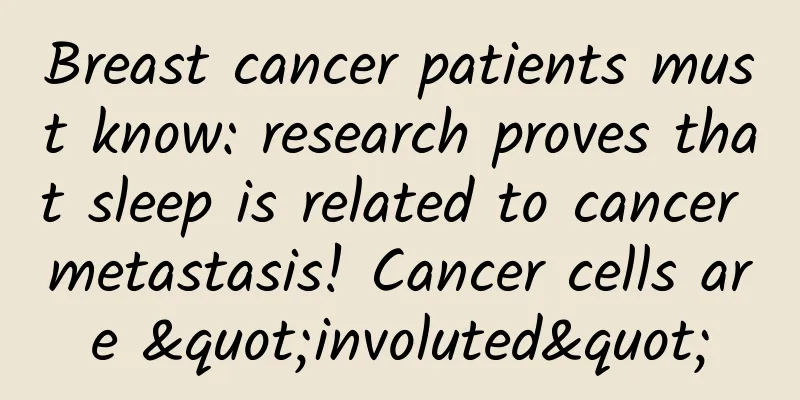There is a "silent killer" lurking around us

|
News background: Osteoporotic vertebral compression fractures (OVCFs) have an insidious onset, and most patients have no obvious trauma or only mild trauma, such as sprains, bumps, slips on flat ground, etc., and even daily actions such as coughing, sneezing, and bending over can cause fractures, so they are likened to "silent killers". This trend is more obvious in postmenopausal women, and the harm is most serious to the elderly. In the "Expert Consensus on the Diagnosis and Treatment of Osteoporotic Vertebral Compression Fractures (2021 Edition)" recently released by the Osteoporosis Prevention and Rehabilitation Professional Committee of the Chinese Rehabilitation Medicine Association, Chinese experts pointed out that OVCFs are seriously threatening the health of women and the elderly, but the current diagnosis and treatment status is not optimistic. It is necessary to enhance the public and medical staff's awareness and attention to the disease, improve the diagnosis and treatment rate, and improve the evaluation system; at the same time, strengthen disease monitoring and management, and treat osteoporosis locally and systematically to achieve good clinical efficacy, reduce the incidence of re-fractures, improve the quality of life of patients, and reduce the socioeconomic burden. There is a pain of "not being able to breathe" With the gradual aging of the population in my country, the incidence of osteoporosis has gradually shown a "rising tide lifts all boats" trend. As one of the most common complications of osteoporosis, about 1.8 million people are "crushed" by osteoporotic vertebral compression fractures every year. In this regard, Professor Lei Nanwei, Chairman of the Pain Professional Committee of the Heilongjiang Chronic Diseases Association of Traditional Chinese and Western Medicine, Director of the Second Department of Orthopedics and Pain Department of Harbin Second Hospital, said that osteoporotic vertebral compression fractures are a "silent" disease, and we must start with the prevention of osteoporosis, pay full attention to it, and truly "prepare for a rainy day". Not long ago, every time 75-year-old Aunt Zhang got up in the morning, she felt severe pain in her chest and back for several days in a row. The symptoms were particularly severe when she coughed and breathed, especially when she turned over and sat up. She was in so much pain that she "couldn't breathe" and dared not walk. Seeing this, her family hurriedly accompanied her to the local hospital to see a doctor. After the examination, no problems were found. The initial diagnosis was muscle and fascia injury, so she went home to rest in bed for a week. Unexpectedly, the situation did not improve, but worsened. Later, she went to the Second Department of Orthopedics (Pain Department) of Harbin Second Hospital in the provincial capital for treatment. According to Aunt Zhang's description, Professor Lei Nanwei, the director of the department, conducted a detailed examination for her and found that the old lady had obvious percussion pain and tenderness in the lower thoracic and lumbar spine. In view of her clinical signs, it was considered to be osteoporotic vertebral compression fracture. Further X-rays and MRI reports showed that six of Aunt Zhang's thoracic vertebrae, T9, T10, T11, and lumbar vertebrae, L2, L4, and L5, had wedge-shaped changes. Except for T11, which was an old fracture, the other five vertebrae were acute compression fractures, and the bone density showed severe osteoporosis. Fortunately, the diagnosis was timely, and after a period of treatment, the old lady is now able to get out of bed and move around. The "Hidden Killer" is the most terrifying Director Lei Nanwei said that OVCFs are a silent and silent disease, and only 1/4 of patients have a history of falls. In contrast, more than 90% of hip fracture cases have a history of trauma from falls. In addition, low back pain is a common disease among the elderly and is usually easy to ignore. Therefore, the rate of OVCFs patients seeking medical treatment is much lower than that of other osteoporotic fractures. At the same time, medical staff do not pay enough attention to thoracic and lumbar spine imaging examinations. A global multicenter study showed that the missed diagnosis rate of vertebral fractures in postmenopausal women aged 65-80 years was 34%, and the missed diagnosis rate of vertebral fractures in chest X-ray examinations of people over 60 years old was 45%. The low visit rate and high missed diagnosis rate resulted in only 23% of patients with fragility fractures being evaluated and treated for osteoporosis; and within 1 year after the formation of OVCFs, only 28.8% of people began to receive anti-osteoporosis treatment. Director Lei Nanwei said that low consultation rates and high missed diagnosis rates often "create opportunities" for OVCFs. In fact, the consequences of OVCFs are very serious, which can easily cause the height of the fractured vertebra to be "lost", kyphosis, and intractable back pain, accompanied by decreased cardiopulmonary function and gastrointestinal dysfunction. After a vertebral fracture occurs, the patient suffers from dry pain, bed rest, and reduced activity, which further consumes the "inventory" of his own bone mass. Continuous bone loss and kyphosis cause the patient's center of gravity to shift forward, significantly increasing the incidence of spinal re-fractures and fractures in other parts of the body. Not only that, fractures and pain can also affect the patient's ability to move, cause sleep and psychological problems, and seriously reduce the quality of life. Statistics show that the mortality rate of OVCFs patients one year after fracture is much higher than that of the general population, and the 4-year survival rate is only 50%. Scientific research to prevent missed diagnosis and misdiagnosis Director Lei Nanwei explained that OVCFs are considered "silent killers" because the loose bones are crushed and twisted like dry sticks without any trauma or with very mild trauma. Its clinical symptoms are acute or chronic persistent pain in the back, chest and back. Thoracic fractures may be accompanied by intercostal nerve radiating pain, which manifests as chest and rib pain in the distribution area of the corresponding segmental nerves. The pain is relieved or disappears when resting in bed, but it will induce pain or aggravate pain when the spine is loaded, such as turning over, sitting up, changing position or walking, and is accompanied by muscle spasms or convulsions. Severe vertebral compression fractures, especially multiple vertebral fractures, can easily twist into kyphosis, forcing the original height to shrink severely. The hunchback and the reduction of thoracic volume directly interfere with normal lung capacity, causing lung function to deteriorate. Similarly, kyphosis aggravates the "pressure" of the rib arch on the abdomen, giving patients the illusion of fullness, which brings on the feeling of fullness earlier, causes loss of appetite, and eventually develops into malnutrition. Professor Lei said that the signs of OVCFs usually include tenderness and percussion pain near the spinous processes of the back and thoracic back, accompanied by thoracic or lumbar kyphosis and scoliosis, and limited waist movement; the pain site reported by the patient may not be consistent with the site found in the physical examination, and careful identification is required in combination with imaging examinations. Clinically, there is generally no abnormal sensation of the lower limbs, muscle weakness, and reflex changes. If the degree of vertebral compression and spinal deformity are severe, it may cause certain damage to neurological function. Director Lei Nanwei suggested that a preliminary diagnosis of OVCFs can be made based on the patient's medical history, symptoms, signs, imaging examinations and bone density measurement results. Among them, magnetic resonance imaging is particularly important in the diagnosis of vertebral fractures. At the same time, care should be taken to avoid missing occult vertebral fractures. For vertebral fractures suspected to be caused by secondary osteoporosis or abnormal bone metabolism, further screening is required to prevent misdiagnosis and missed diagnosis. Eliminate hidden dangers from the source Today, my country has entered a long winter with ice and snow, and water freezes into ice. In particular, heavy snow frequently hits most areas in the north, and the roads are frozen and slippery. Such environmental factors, together with factors related to aging, disease, and neuromuscular diseases, can easily cause falls and injuries in the elderly. Once a fall and fracture are not detected in time, it is easy to cause secondary injuries and even develop into occult fractures. In particular, osteoporotic vertebral compression fractures (OVCFs) have the pathological basis of osteoporosis. Therefore, it is particularly important to actively respond to and prevent osteoporosis from the source. Lei Nanwei pointed out that since the pathological basis of OVCFs is osteoporosis, surgery only targets local lesions, and comprehensive intervention should be carried out to resist the sneak attack of osteoporosis, increase bone mass, relieve pain, and eliminate the possibility of re-fracture. To this end, Director Lei gave the following suggestions: The first is health education: Providing the public with correct health education is helpful to prevent and treat osteoporosis and improve patient compliance. Through education, the public can have a deep understanding of the causes behind osteoporosis, the disease characteristics and related complications of OVCFs, the diagnosis and treatment of fractures, the importance of anti-osteoporosis, and specific measures to prevent falls. At the same time, patients can master self-assessment methods and correct rehabilitation exercises, learn pain self-assessment, effective breathing and coughing, waist wear, turning over on the bed axis, and the correct posture and skills of moving, walking, sitting and lying in bed, so as to facilitate early rehabilitation. The second is to adjust and establish a good lifestyle: consume a balanced diet rich in calcium, low in salt and appropriate amount of protein; expose the skin to the sun for 15-30 minutes at least twice a week. Adequate sunlight is beneficial to the synthesis of vitamin D in the body; quit smoking and drinking, avoid excessive drinking of coffee and carbonated drinks; try not to use or reduce the use of drugs that affect bone metabolism. The third is to actively carry out exercise therapy: exercise therapy includes muscle strength training, aerobic exercise training, joint range of motion training and balance and coordination function training, etc., aiming to enhance the patient's muscle strength and endurance, prevent disuse muscle atrophy caused by osteoporosis, improve the decline in muscle strength caused by aging, enhance the patient's flexibility and balance ability, and reduce the risk of falling. Low-intensity daily activities and sports are recommended for the elderly. For patients with chronic low back pain, it is advisable to choose stretching exercises that do not increase the load on the spine and forward flexion load. Related knowledge links Bone essential supplements: According to the 2018 version of the Chinese Dietary Reference Intake of Nutrients, people aged 50 and over need to supplement elemental calcium of 500 to 600 mg/day in addition to daily dietary calcium intake (about 400 mg). The selection of calcium supplements should consider its calcium content, safety and effectiveness. Lei Nanwei emphasized that adequate vitamin D can increase intestinal calcium absorption, promote bone mineralization, maintain muscle strength, improve balance and reduce the risk of falls. Anti-osteoporosis drugs: For patients who have suffered vertebral fragility fractures, regardless of whether their bone density test results meet the diagnostic criteria, they should be given anti-osteoporosis drugs to increase bone density, improve bone quality, and reduce the probability of re-fracture. Director Lei Nanwei introduced that anti-osteoporosis drugs can be divided into bone resorption inhibitors, bone formation promoters, other mechanism drugs and traditional Chinese medicine according to their mechanism of action. Introduction of Dr. Lei Nanwei Chief physician, part-time professor. Current position: Director of Pain Department and Director of Orthopedics Department II, Harbin Second Hospital. Adjunct professor of Jiamusi University School of Medicine, chairman of the Pain Professional Committee of Heilongjiang Chronic Disease Society of Integrated Traditional Chinese and Western Medicine, vice chairman of the Shock Wave Society of Heilongjiang Medical Association, member of the Spine Group of the Orthopedic Professional Committee of Heilongjiang Medical Association, and member of the Harbin Orthopedic Professional Committee. |
<<: What is the best match for mint? Can mint leaves remove fishy smells?
Recommend
Sleeping on the left side during pregnancy
How should mothers sleep during pregnancy? I beli...
The most effective medicine for ovarian cysts
Ovarian cysts are a common gynecological disease ...
Is it OK to have sex 15 days after abortion?
We all know that abortion can cause great harm to...
What are the preparations before salpingography?
Nowadays, many women suffer from infertility. The...
What should I do if I have vaginal itching?
Many women are troubled by the problem of vaginal...
Will inflammation cause small bumps to appear at the vulva?
When inflammation occurs, if it is not treated we...
Menstruation delayed for one month during breastfeeding
We know that a woman's menstruation will temp...
Will I get gynecological inflammation if I have never had sex?
Women may experience various gynecological inflam...
Here are some ways to take care of your body before pregnancy
Here are some ways to take care of your body befo...
What is the white paste that comes out of a woman's nipple?
The breasts of women are the most important part ...
How many days does it take to detect early pregnancy?
Early pregnancy test paper is a product designed ...
Reasons for delayed menstruation after vasectomy
We all know that in life, if a couple has sexual ...
Right side cramping during early pregnancy
In the early stages of pregnancy, many women expe...
Will hcg double if there is an ectopic pregnancy?
Many female friends know about ectopic pregnancy,...
The therapeutic effect of moxibustion on gynecological inflammation
More than 80 percent of female friends will suffe...









